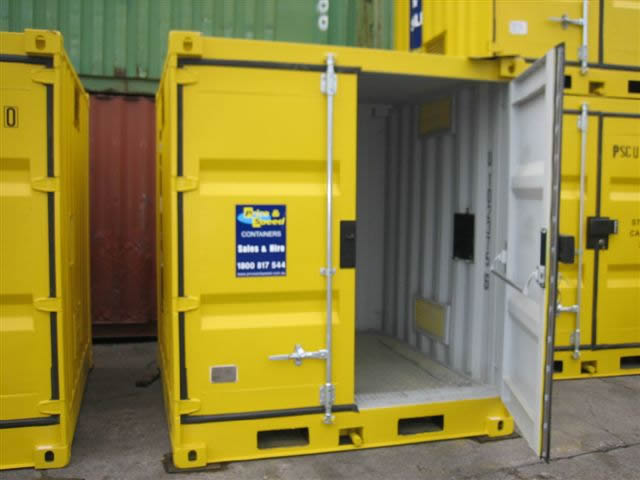Freight from the USA
|
|
|
|||
While international shipping costs may be higher for DG due to specialized handling, the investment in safety and regulatory adherence is essential.
IMPORTANT! We may consider supporting Dangerous Goods (DGD, HAZMAT) shipments only for commercial cargo of Classes 3, 8, and 9, when the IMO and MSDS are provided in advance. We DO NOT arrange pickups for DGD. We DO NOT support international shipping of personal effects containing dangerous goods, even if they are a small part of the shipment.
Every booking request related to the international transportation of Dangerous Goods must be accompanied by a draft of the Dangerous Goods Declaration (IMO) and the Material Safety Data Sheet (MSDS). Steamship lines will bill a $35,000 mis-declaration fee due to not matching DGD documents. If you are not a professional in DGD transportation, it is recommended that you seek assistance from a qualified expert. Please provide them with all available information about your DGD shipment and obtain proper paperwork. Booking requests without the draft of the IMO and MSDS attached cannot be processed. No exceptions.
Our online freight calculator DOES NOT reflect DGD surcharges. After considering and approving a DGD shipment by the carrier, the sea carrier's DGD surcharges may double or triple the carrier's rate vs. freight rates obtained for general commodities. Our freight forwarder surcharge of $175 will be added to the final international shipping cost.

Regarding international cargo transportation from the US using sea freight, the conveyance of DG refers to the transportation of substances or materials that have been determined to pose a risk to health, safety, and property when transported in commerce. The equivalent term in US domestic ground transportation is Hazardous Material (HAZMAT). The term Hazardous Material (HAZMAT) is used almost exclusively in the United States. Then, hazardous materials will be classified as DG for international shipping from the USA by sea.
Everything related to such cargo transportation is strictly regulated, including documentation, labeling, packing, and marking.

The shipper is always responsible for identifying, declaring, and providing all necessary documentation for transporting regulated items in proper forms acceptable to the ocean freight carrier. All charges resulting from a lack of appropriate documentation are the shipper's responsibility. Cargo exporting from the USA containing DGD may require more transit time than regular sea shipments.
Most international ocean freight carriers will NOT accept HAZMAT, except for IMO Classes 3, 8, and 9. Hazardous items other than classes 3, 8, and 9 require sea freight carriers with specialized equipment.
UN NUMBER - stands for United Nations number. The UN number is a four-digit code assigned to potentially hazardous materials (such as gasoline, UN 1203) or classes of materials (such as corrosive liquids, UN 1760). Firefighters and other emergency response personnel use these numbers during transportation emergencies. UN (United Nations) numbers are internationally recognized.
IMO CLASS - International Maritime Organization HAZMAT class
Class 1. Explosives
Class 2. Gases
Class 3. Flammable Liquids
Class 4.1. Flammable Solids or Substances
Class 4.2. Flammable solids
Class 4.3. Substances that, in contact with water, emit flammable gases
Class 5.1. Oxidizing substances (agents), by yielding oxygen, increase the risk and intensity of a fire
Class 5.2. Organic peroxides - most will burn rapidly and are sensitive to impact or friction
Class 6.1. Toxic substances
Class 6.2. Infectious substances
Class 7. Radioactive Substances
Class 8. Corrosives
Class 9. Miscellaneous hazardous substances and articles
FLASHPOINT - the lowest temperature at which the material can catch fire.
PACKING GROUP - grouping according to the degree of danger presented by hazardous materials. Packing Group I indicates great risk; Packing Group II is medium danger; Packing Group III is minor danger.
Before booking any shipment containing DGD, ensure you:
Expect 2–3× higher international shipping costs vs. standard freight due to:
Upon submitting a booking request for international shipping from the US cargo containing hazardous commodities, the exporter must provide a draft of the IMO and the Material Safety Data Sheet (MSDS) in a proper form acceptable to an ocean carrier.
If you are not a professional in DGD transportation, you may need to find a company specializing in DGD handling.
Upon approval and receipt of the booking confirmation, the shipper fills in the missing IMO fields and resubmits them to all related parties.
Here is a sample form of the IMO used in international shipping from the United States of America.

Cargo Containing Lithium-Ion Batteries
Customer Advisory - Lithium-Ion Batteries SP 188. Issue Date: February 19, 2020
Effective immediately, ocean freight carriers will not accept export shipments containing Lithium-Ion Batteries declared as Non-Hazardous according to Special Provision 188 without a copy of the SDS (Safety Data Sheet) and the Test Report confirming compliance with Special Provision 188.
For additional information on acceptable test reports, please refer to:
Manual of Tests and Criteria, Part III, subsection 38.3, paragraph 38.3.5. or the US Department of Transportation website.
When transporting hazardous materials internationally from the U.S., certain items may react dangerously with other substances, including chemicals, air, and water. Leaks or spills could create toxic gases, fires, or explosions. U.S. law requires the proper segregation of incompatible cargo during ocean transport to prevent accidents.
Key Requirements:
1. Segregation Methods:
Hold Harmless Letter:
If carriers must segregate your regulated items, you must provide this signed document on company letterhead stating:
Regulatory Reference:
For complete rules, see 49 CFR Parts 100-185 (Hazardous Materials Transportation Regulations).
|
|